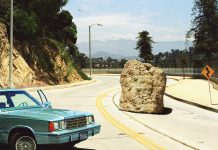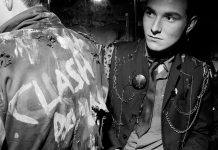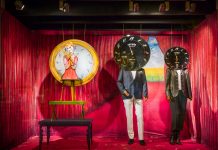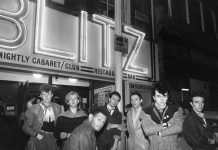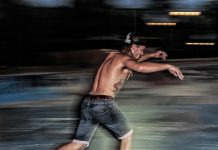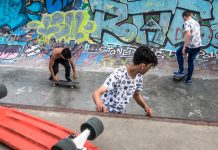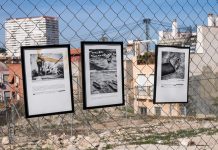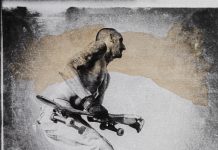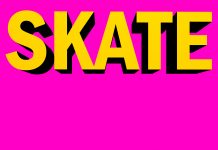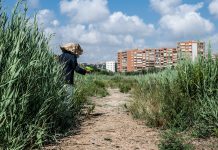
City Skate Tour #8 Alicante, 21 May 2021. Calle Canalejas. Alicante. Spain.
(1) City Skate Tour starts from a performative idea of urban space through a dissident sample of photographs, texts, photocopied, altered images, all of them belonging to the City 00Skate Days (CSKD) series. (2) To the extent that skateboarding seeks a new vital and social rhythm in the appropriation of the city and the search for alternative itineraries, the photographic exhibition can also become a differentiated urban practice, capable of creating visual thresholds far removed from uses and institutional submissions of art.
(3) The city is the nexus between image and skate. There is no claim in this. There is no other result than that which a passerby could attribute to you when encountering an unexpected image, an attribution of which any value or meaning is unknown. (4) But there are other ways of saying it: City Skate Tour proposes intervention in peripheral enclaves and restores the rhythm of a random, minimal world. That is why the influx of people in those specific spaces do not matter so much as the way in which the image becomes visible through the context that surrounds it. Skateboarding is a metaphor for that threshold.
(5) In City Skate Tour, the idea is projected into a basic action: crossing the city can be considered an imperceptible, inconsequential happening, but if at some point in the journey something causes the passer-by to stop, the action could also become a social fact. In this case, stopping is accompanied by other minimal acts: assembling the images to an urban surface has more to do with creating a site for the image than with a purely expository need.
(6) Between the action and the fact there is a whole compendium of social and artistic traditions that were going to try to show the city as something tangible associated with an altered, even revolutionary dynamic. The references are multiple, but what interested me is, above all, that the city can be used to express ideas, whether complex or simple. Ideas that become tangible in action. (7) The public expression of a work requires some type of social requirement, and this does not have to be restricted to the programmatic conventions of galleries or institutions.
(8) If the Situationists had shown another way of conceptualizing the urban experience based on a playful-constructive behavior, radicalized by their insistence on requesting for themselves a vital state that denied capitalist norms, I find in the gesture of the painter Peter Hobbs a current that unites art, nomadism and situationism. The art critic Thomas Crow would express it as an emerging art form that moved away from any foreseeable gaze: «Peter Hobbs led the situationist aesthetic towards a process of isolated nomadism», and he did so by hosting his canvases on vacant lots in the East End of London to photograph them later as an indirect, but more vivid and real, way of recreating the painting in an urban installation. War photographer Don McCullin helped him create that sensation through photographs that were to fix the fact, that moment, on the margins of institutional life.


Fotocopia #101. Good skateboarding place. 2016-2019. Texto. Skateboarding is characterized as a transgressive activity that challenges the regulations imposed on urban space. Skateboarders demonstrate an awareness of the built environment and perceive the city and its physical elements in ways different from non skaters. Through their practice of skateboarding, they transform some of the designated functions of architecture into new ones. Studies that focus on transgression further argue that the distinction of «in» and «out» for defining transgression in public space is too simple because skateboarding in one place may be considered more acceptable than in other places. Spaces that young skateboarders prefer are those that offer accessibility, sociability, compatibility, and opportunities for tricks. Skaters prefer the natural environment of the street over purposely built spaces. And yet the reasons for this preference and an exact distinction between skating in the natural environment and in the purposely designed envi-ronment are not clearly addressed. I focus on the comparison of street skating and park skating to investigate the significance of locality in skateboarding behaviors. The behaviors of street skateboarding embody the notion of spatial practices, the physical activities that shape and reshape material space. Street skating ensures skaters of performance, competence, agency, and social opportunities; thus it constructs a mental, a social, and a body space. In other words, skateboarding as an urban practice is a demonstration of how citizens traverse the spatial planning power structure that restricts citizens’ uses of and right to the city. Referencia. Chihsin Chiu. Street and Park Skateboarding in New York City Public Space, Space and culture vol. 12 no. 1, February 2009.
Fotocopia #72. What makes skateboarding unique. 2015-2021. Texto. What makes skateboarding unique? We claim that it is skateboarding’s activity, what might be called «interactivity», that distinguishes it from other kinds of athletic and subversive behaviors. By interactive, we mean to describe skateboarding’s double use of architecture and the surrounding norms and rules of how it is used, when handrails and stairs are skated their intended use is subverted while the architecture controls how they are subverted and manipulated. Referencia. Brian Glenney & Steve Mull. Skateboarding and the Ecology of Urban Space, J Sport Soc Issues, 2018 December.




